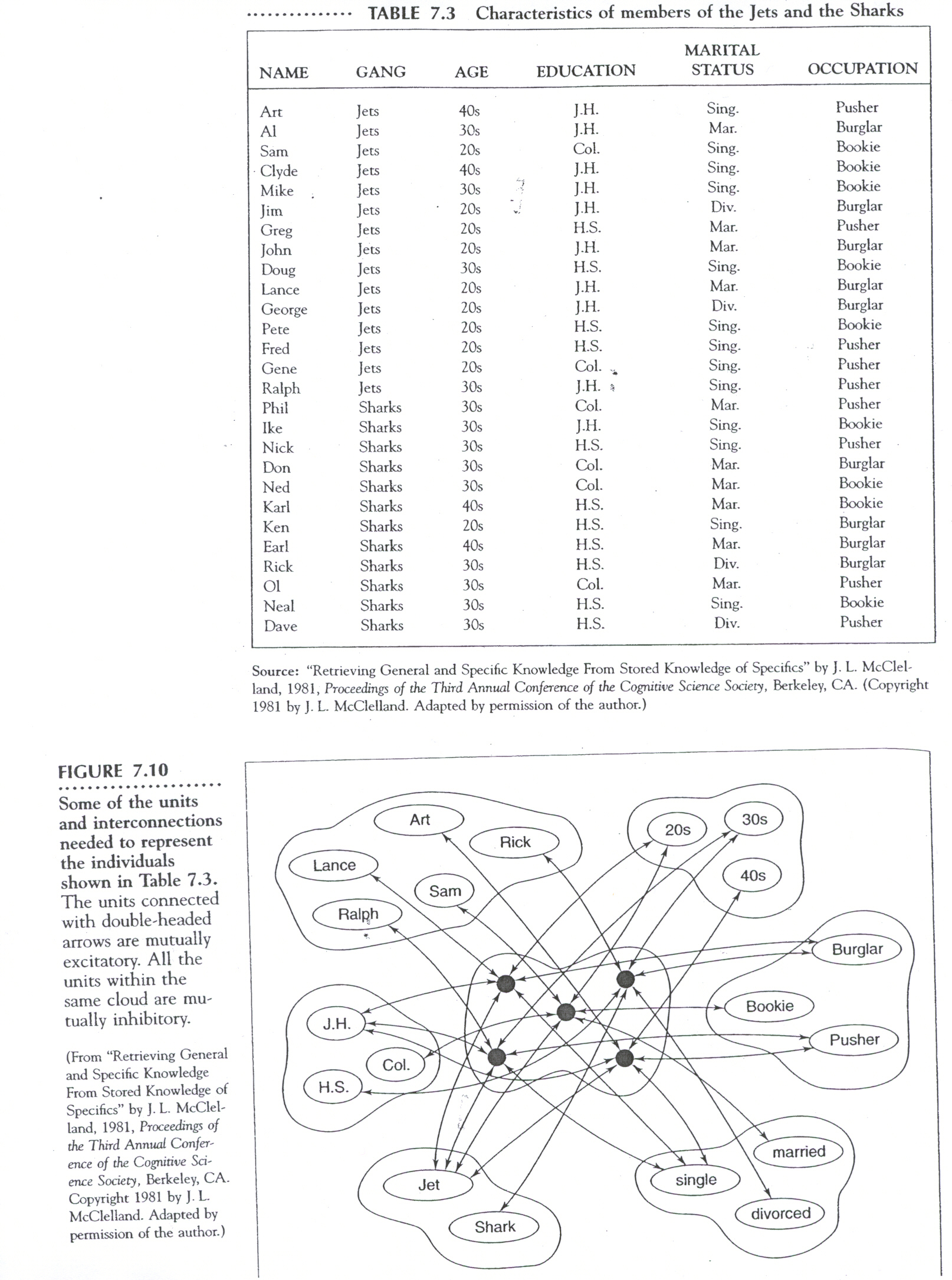
A connectionist network can be taught the characteristics of several people.
The network can be asked "What are Art's characteristics?" by activating "Art". The model will answer with all of Art's characteristics. That is, "Member of Jets", "In his 40's", "Junior High School Education", "Single", and "Pusher", will all become active.
But it also has the emergent property of being "Content Addressable". That is, the knowledge can be accessed by means of any of the characteristics without needing to actually provide any indexing system. If you ask it "Who are the bookies?", that is, you activate bookie, it will answer by activating the names of all the bookies. But you could also ask "Who are the divorcees?", and it would activate the divorcees.
It also has the emergent property of being capable of "Spontaneous Generalization". Suppose you teach the network all of the people and their characteristcs. But suppose that there are patterns in the characteristics. Perhaps the burglars are more likely to be younger and single, whereas the bookies tend to be older and married or divorced. Now suppose you introduce a new person, but leave out the information about the "occupation". However, this new person is young and single. Now if you ask for the names of all the burglars, the name of this new person will probably become active. Or if you ask for the occupation of the new person, then probably "burglar" will become active. In other words, the network generalizes what it "knows" (young, single gang members are more likely to be burglars than bookies), to the new person, and it does it spontaneously. That is, you do not have to teach the network anything special, or build it in any special way, for this to happen.
